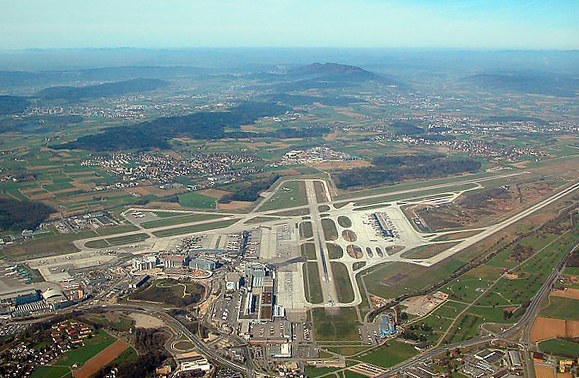The Airfield: Structure, Traffic Rules and Procedures
1. Construction of an Airfield
- Large area
- Access controlled
- Different sections with defined tasks
- Normally outside larger cities
- Civil, mixed or purely military use
Purpose. They serve for:
- Take-off and landing of aircraft and helicopters
- Aircraft maintenance and repair
- Parking area
- Transport of passengers and cargo
Large airfields are gigantic infrastructural projects with decades of use and considerable effects on the environment, the housing situation of local residents, the job market and the economic situation of entire regions. An airfield belongs to the public transport network just like a motorway or railway station.
Airspace. The airspace around the airport is subject to restrictions and special regulations. The military significance for logistics and defence of entire countries makes airfields primary targets in any conflict.
When viewed from the air airfields appear to be very clearly arranged. However, on the ground they are a tangle of paths, buildings and parking areas, so we would like to give you a few basics for orientation. The procedures at airports are actually logical and, in order to ensure smooth functioning, the same everywhere in the world. A few of the rules of conduct and procedures are very important for pilots and we will start with them in the second chapter.

